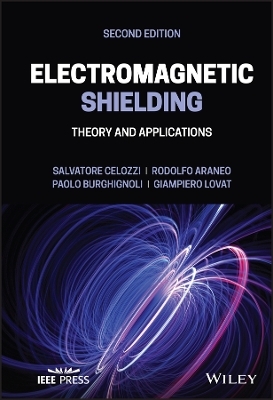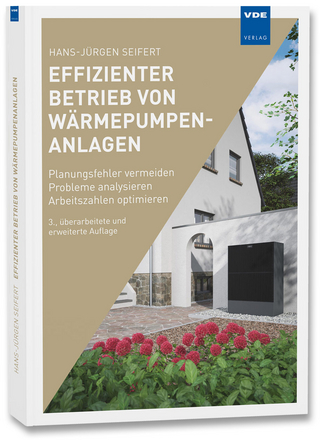
Electromagnetic Shielding
Wiley-IEEE Press (Verlag)
978-1-119-73628-8 (ISBN)
This book describes the fundamental, theoretical, and practical aspects to approach electromagnetic shielding with a problem-solving mind, either at a design stage or in the context of an issue-fixing analysis of an existing configuration. It examines the main shielding mechanisms and how to analyze any shielding configuration, taking into account all the involved aspects. A detailed discussion on the possible choices of parameters suitable to ascertain the performance of a given shielding structure is also presented by considering either a continuous wave EM field source or a transient one.
To aid in reader comprehension, both a theoretical and a practical engineering point of view are presented with several examples and applications included at the end of main chapters. Sample topics discussed in the book include:
Concepts in transient shielding including performance parameters and canonical configurations
Time domain performance of shielding structures, thin shields, and overall performance of shielding enclosures (cavities)
How to install adequate barriers around the most sensitive components/systems to reduce or eliminate interference
Details on solving core fundamental issues for electronic and telecommunications systems via electromagnetic shielding
For industrial researchers, telecommunications/electrical engineers, and academics studying the design of EM shielding structures, this book serves as an important resource for understanding both the logistics and practical applications of electromagnetic shielding. It also includes all recent developments in the field to help professionals stay ahead of the curve in their respective disciplines.
Salvatore Celozzi, PhD, is a Professor at the University of Roma "La Sapienza", Italy. He has published more than one hundred and fifty papers in refereed journals or in proceedings of international conferences, mainly in the fields of electromagnetic shielding, transmission lines, and printed circuits. Rodolfo Araneo, PhD, is a Professor at the University of Roma "La Sapienza", Italy. His fields of expertise are electromagnetic shielding, numerical methods, power systems, and renewable energies. Paolo Burghignoli, PhD, is an Associate Professor at the University of Roma "La Sapienza", Italy. His research topics are in the areas of antennas, advanced electromagnetic materials, and electromagnetic shielding. Giampiero Lovat, PhD, is an Assistant Professor at the University of Rome "La Sapienza", Italy. His research encompasses theoretical and numerical studies on electromagnetic shielding, periodic structures, electrodynamics of graphene, leakage phenomena in planar structure, and transient electromagnetics.
About the Authors ix
Preface xiii
1 Electromagnetics Behind Shielding 1
1.1 Definitions 1
1.2 Notation, Symbology, and Acronyms 3
1.3 Macroscopic Electromagnetism and Maxwell's Equations 4
1.4 Constitutive Relations 6
1.5 Discontinuities and Singularities 11
1.6 Initial Conditions, Boundary Conditions, and Causality 12
1.7 Poynting's Theorem and Energy Considerations 13
1.8 Fundamental Theorems 16
1.9 Wave Equations, Helmholtz's Equations, Potentials, and Green's Functions 23
1.10 Basic Shielding Mechanisms 28
1.11 Source Inside or Outside the Shielding Structure and Reciprocity 29
2 Shielding Materials 33
2.1 Standard Metallic and Ferromagnetic Materials 33
2.2 Ferrimagnetic Materials 39
2.3 Ferroelectric Materials 41
2.4 Thin Films and Conductive Coatings 43
2.5 Other Materials Suitable for EM Shielding Applications 45
2.6 Special Materials 46
3 Figures of Merit for Shielding Configurations 61
3.1 (Local) Shielding Effectiveness 61
3.2 The Global Point of View 64
3.3 Other Proposals of Figures of Merit 65
3.4 Energy-Based, Content-Oriented Definition 69
3.5 Performance of Shielded Cables 69
4 Shielding Effectiveness: Plane Waves 73
4.1 Electromagnetic PlaneWaves: Definitions and Properties 73
4.2 Uniform PlaneWaves Incident on a Planar Shield 75
4.3 PlaneWaves Normally Incident on Cylindrical Shielding Surfaces 86
4.4 PlaneWaves Against Spherical Shields 93
4.5 Extension of the TL Analogy to Near-Field Sources 94
5 Shielding Effectiveness: Near-Field Sources 109
5.1 Spectral-Domain Approach 109
5.2 LF Magnetic Shielding of Metal Plates: Parallel Loop 122
5.3 LF Magnetic Shielding of Metal Plates: Perpendicular Loop 130
5.4 LF Magnetic Shielding of Metal Plates: Parallel Current Line 134
6 Transient Shielding 141
6.1 Performance Parameters: Definitions and Properties 141
6.2 Transient Sources: PlaneWaves and Dipoles 145
6.3 Numerical Solutions via Inverse-Fourier Transform 149
6.4 Analytical Solutions in Canonical Configurations 150
7 Numerical Methods for Shielding Analyses 169
7.1 Finite-Element Method 171
7.2 Method of Moments 187
7.3 Finite-Difference Time-Domain Method 208
7.4 Finite Integration Technique 221
7.5 Transmission-Line Matrix Method 226
7.6 Partial Element Equivalent Circuit Method 230
7.7 Test Case for Comparing Numerical Methods 239
8 Apertures in Planar Metal Screens 257
8.1 Historical Background 258
8.2 Statement of the Problem 259
8.3 Low-Frequency Analysis: Transmission Through Small Apertures 260
8.4 The Small Circular Aperture 261
8.5 Small Noncircular Apertures 269
8.6 Finite Number of Small Apertures 269
8.7 Apertures of Arbitrary Shape: Integral-Equation Formulation 272
8.8 Rules of Thumb 275
9 Enclosures 283
9.1 Modal Expansion of Electromagnetic Fields Inside a Metallic Enclosure 284
9.2 Oscillations Inside an Ideal Source-Free Enclosure 287
9.3 The Enclosure Dyadic Green Function 288
9.4 Excitation of a Metallic Enclosure 291
9.5 Damped Oscillations Inside Enclosures with LossyWalls and Quality Factor 292
9.6 Apertures in Perfectly Conducting Enclosures 294
9.7 Small Loading Effects 301
9.8 The Rectangular Enclosure 302
9.9 Shielding Effectiveness of a Rectangular Enclosure with an Aperture 307
9.10 Case Study: Rectangular Enclosure with a Circular Aperture 315
9.11 Overall Performance in the Frequency Domain 326
9.12 Overall Performance in the Time Domain 328
10 Cable Shielding 339
10.1 Transfer Impedance in Tubular Shielded Cables and Aperture Effects 340
10.2 Relationship Between Transfer Impedance and Shielding Effectiveness 345
10.3 Actual Cables and Harnesses 347
11 Components and Installation Guidelines 351
11.1 Gaskets 351
11.2 ShieldedWindows 355
11.3 Electromagnetic Absorbers 357
11.4 Shielded Connectors 358
11.5 Air-Ventilation Systems 358
11.6 Fuses, Switches, and Other Similar Components 359
12 Frequency Selective Surfaces 363
12.1 Analysis of Periodic Structures 364
12.2 High- and Low-Pass FSSs 376
12.3 Band-Pass and Band-Stop FSSs 380
12.4 Recent Trends in FSSs 383
12.5 Absorbing FSSs 388
12.6 Modeling and Design of FSSs 392
13 Shielding Design Guidelines 409
13.1 Establishment of the Shielding Requirements 410
13.2 Assessment of the Number and Types of Functional Discontinuities 412
13.3 Assessment of Dimensional Constraints and Non-Electromagnetic Characteristics of Materials 413
13.4 Estimation of Shielding Performance 413
References 414
14 Uncommon Ways of Shielding 417
14.1 Active Shielding 417
14.2 Partial Shields 422
14.3 Chiral Shielding 425
14.4 Metamaterial Shielding 426
Appendix A Electrostatic Shielding 439
A.1 Basic Laws of Electrostatics 440
A.2 Electrostatic Tools: Electrostatic Potential and Green's Functions 442
A.3 Electrostatic Shields 446
Appendix B Magnetic Shielding 459
B.1 Magnetic Shielding Mechanism 460
B.2 Calculation Methods 463
B.3 Boundary-Value Problems 465
B.4 Ferromagnetic Shields with Hysteresis 477
Appendix C Statistical Electromagnetics for Shielding Enclosures 483
C.1 Statistical Analyses 486
C.2 Examples 489
Appendix D Standards and Measurement Methods for Shielding Applications 499
D.1 MIL-STD 285 and IEEE STD-299 501
D.2 NSA 65-6 and NSA 94-106 506
D.3 ASTM E1851 506
D.4 ASTM D4935 508
D.5 MIL-STD 461G 510
D.6 Code of Federal Regulations, Title 47, Part 15 517
D.7 ANSI/SCTE 48-3 520
D.8 MIL-STD 1377 521
D.9 IEC Standards 522
D.10 ITU-T Recommendations 527
D.11 Automotive Standards 529
References 535
Index 539
| Erscheinungsdatum | 30.11.2022 |
|---|---|
| Reihe/Serie | IEEE Press |
| Sprache | englisch |
| Gewicht | 975 g |
| Themenwelt | Technik ► Elektrotechnik / Energietechnik |
| ISBN-10 | 1-119-73628-5 / 1119736285 |
| ISBN-13 | 978-1-119-73628-8 / 9781119736288 |
| Zustand | Neuware |
| Informationen gemäß Produktsicherheitsverordnung (GPSR) | |
| Haben Sie eine Frage zum Produkt? |
aus dem Bereich


